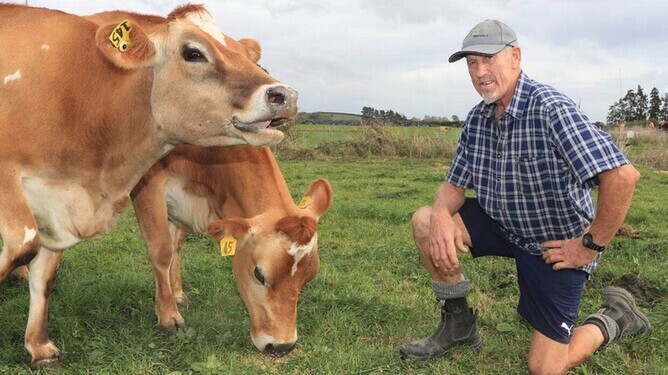Congratulations to our wonderful clients Dick and Faye on their outstanding success with their caramel jersey "once in a lifetime" cow.
The following article is written by Stuff
One of Waikato farmer Dick Post’s caramel jersey cows has turned out to be more of a golden calf.
The Tauwhare breeder lives for agriculture and more than anything else - dairy farming.
But the retiring breeder along with his wife Faye, never anticipated that one of their Jersey cows would be a record breaker.
Last week the pair put their herd of 265 cows and 85 in-calf heifers or female calf in a dispersal sale held via an online platform.
And, with a stroke of luck, the caramel adorning jersey hit the jackpot, with an Otago based farmer claiming it for $55,000 – record for a single cow for the last 50 years.
“It was surreal, the mother went first, and she did very well and then the daughter came, and all hell broke loose,” said Post, remembering how they sat on the edge of their seats watching the price creep up.
“She’s exceptional, she’s a once in a life-time cow.”
But it didn’t stop there, the mother, or dam and half-sister of the successful jersey were also bought by the same Otago farmer with the former grossing $23,100 and the latter, $23,400.
Post was born and bred on his Tauwhare farm and loves the liberation of being out in the paddocks.
He has been managing this herd since 1978, and it was proving to be one of the most productive herds in the country.
The cows produce an average of more than 400 kilograms annually of milk solids and more than 1900 kilograms of milk solids per hectare.
Their breed of jersey was also valued for its solid build, functioning udders and prolific fertility.
It was all about the “TLC” or tender, love and care said Post cheekily, that was the key to rearing thriving dairy cows.
“It’s very high in protein...she generates not only just milk but also high milk solids which is fat plus protein,” he said.
“You have to rear your young stock. If we leave them in a bare paddock, they’re not going to grow like that, the first two years when we rear them, that’s the meat in the sandwich.
“You shift them every day, when there’s a drought we need to supply more feed, you don’t let them suffer because you won’t get a cow like that.”
He felt their accomplishment was a testament to the value of the agricultural industry and farmers more importantly.
“It’s just a great story for agriculture and for the dairy industry,” said Post.
“It’s a lifetime investment...and the story hasn’t finished yet.”




